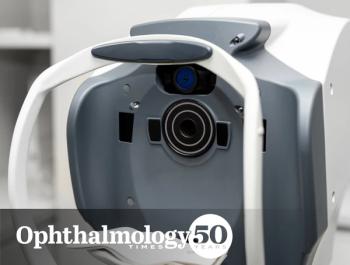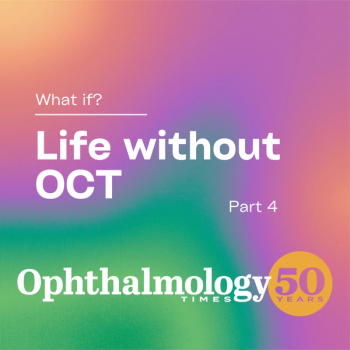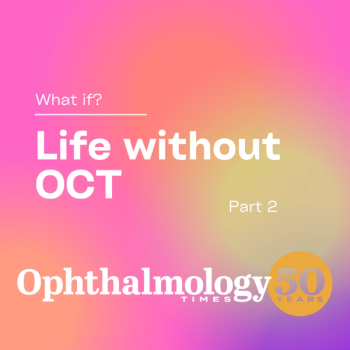
- Ophthalmology Times: October 1, 2021
- Volume 46
- Issue 16
Should we always trust the OCT?
There are times when physicians should be critical of scans.
How often do you decide not to trust an
My guess is it is not often enough.
We must be discerning when choosing to accept results of an OCT scan, with quality determining the accuracy of the segmentation of the retinal layers.
That segmentation provides the numbers we use to determine whether disease is present and progressing.
We must know whether the OCT image quality is adequate, and whether the OCT segmentation is correctly defining the retinal layer borders of interest.
The problem is that even if the segmentation is wrong, the OCT will report a value. This is what results in so-called “red disease.”
Related:
The values will be reported in the data tables and labeled with green, yellow, or red and will be shown on the volumetric scan data, such as the “heat maps” of retinal, GCIPL, GCC, or RNFL thickness.
Our tendency to quickly interpret the
We must consider factors that will result in poor image quality and poor retinal layer segmentation and decide whether what we are seeing and measuring is real.
Conditions affecting signal quality include the condition of the ocular media, such as cornea lubrication, cataracts, and vitreous opacities. The focus will be affected by refractive error.
The farther from the anteriormost scan point the focus is, the poorer the scan quality and resolution with spectral domain OCT will be.
More editorials:
Scan alignment and the polarization setting impact image quality. There can be vignetting of the scan due to signal deterioration at the pupillary edge.
Scan quality will be enhanced in SD-OCT by keeping the image close to the zero-delay, because signal quality is highest at the top third of the scanning window.
The tissue in the scan should appear as flat as possible.
Other factors can affect the scan quality, from blood vessel shadows to eye movement.
The only quantitative parameter we have for assessing image quality is an amalgam of signal-to-noise ratio and other proprietary factors specific to a given device manufacturer.
Additional editorials:
The nominal values for devices in the United States are:
There is no measure of segmentation quality with any of the OCT devices, short of subjective evaluation by the user to see whether the borders outlined by the algorithm seem to match the visible relevant tissue layer borders.
Myopic eyes present problems for
OCT can be a boon in the assessment of glaucoma and must be interpreted to ensure results are accurate and not driven by artifact.
The time taken to assess OCT image and segmentation quality pays off for physician and patient and enhances the quality of care that we are able to provide.
About the author
Joel S. Schuman, MD, FACS
E: [email protected]
Schuman is the Elaine Langone Professor & Vice Chair for Ophthalmology Research Department of Ophthalmology, NYU Grossman School of Medicine, NYU Langone Health, New York University, New York, New York, and a member of the editorial board of Ophthalmology Times®.
Articles in this issue
about 4 years ago
ARMOR study: Keeping pace with microbial resistance to antibioticsabout 4 years ago
Surgeons are changing delivery methodabout 4 years ago
Home monitoring of wet AMD offers high-quality scansabout 4 years ago
Study examines VR orientation, mobility testingabout 4 years ago
Advances in cataract surgery show value in tools, tech for surgeonsabout 4 years ago
Bilateral retinoblastoma tumors: The same but differentabout 4 years ago
The relationship between myopia and conjunctival-scleral geometryabout 4 years ago
Depth-of-focus enhancement makes target easier to hitNewsletter
Don’t miss out—get Ophthalmology Times updates on the latest clinical advancements and expert interviews, straight to your inbox.



















































.png)


